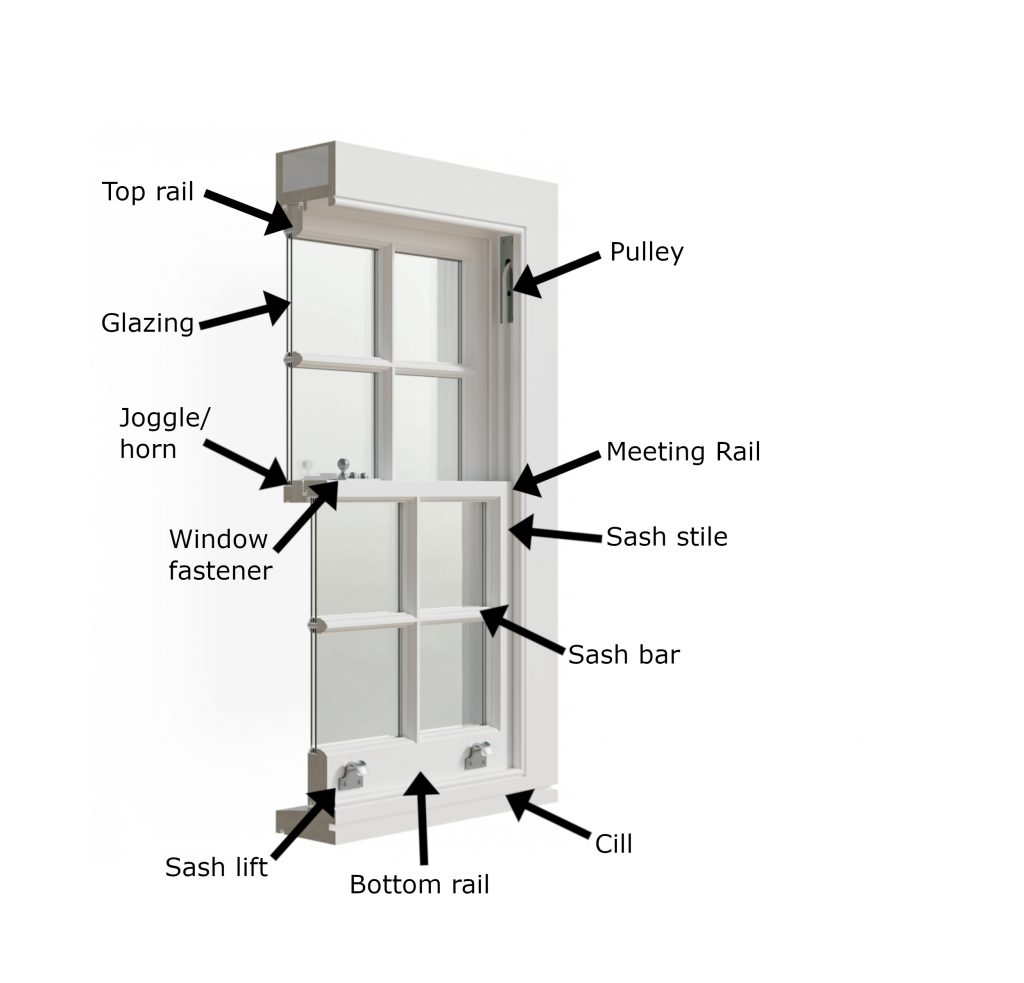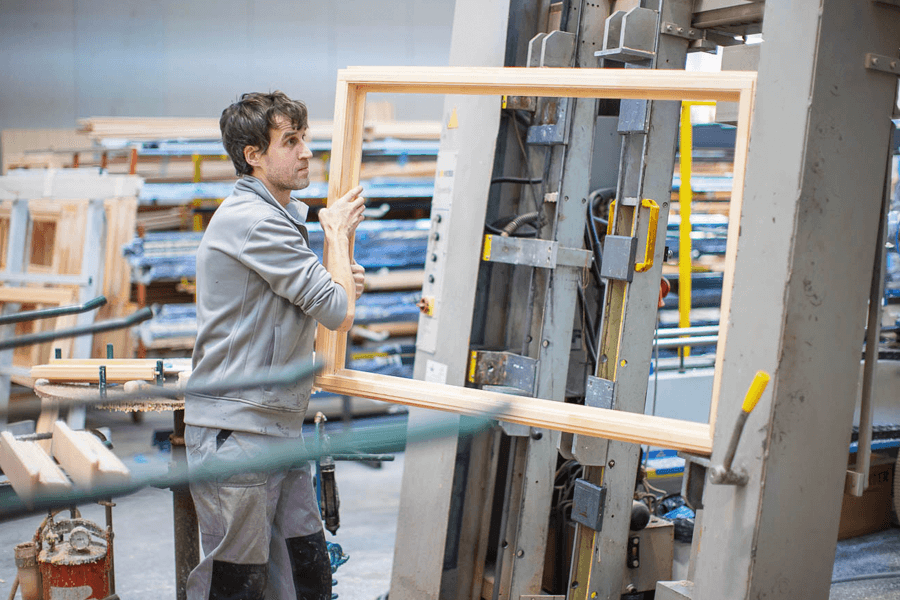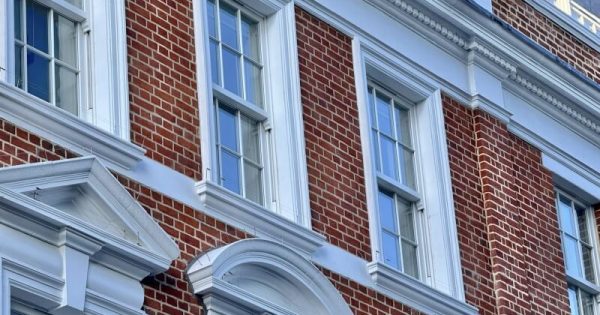Fri Feb 11
Sash window restoration can be a tough but worthwhile task. It is done in different ways but below is the general process followed by a look at the different stages. Before learning how to restore sash windows, it is helpful to know the different parts of a sash window:

The general process
- Remove sashes from the frame
- Remove old glass and putty
- Joints are cleaned and damaged timber is removed
- New wood is spliced in and resin applied
- The timber is sanded and primed
- Glass is put back (after glazing if applicable) or replaced
- The frame is painted and sealed
- Hardware is replaced or reattached
- The sashes are placed in the frames
Frame restoration
Restoring the frame of the sash window is a big part of the process once the window is disassembled.
- Rotten or damaged wood is removed carefully, making sure to maximise the amount of original wood left over.
- Where wood has been removed new timber is inserted, it must match the original wood.
- The timber is then filled with an epoxy based resin and is smoothed.
- The wood is primed, then painted. Painting the wood seals it and acts as a protective layer against the elements.
- Old paint can be removed from the wood during this process by using a heat gun or acids like nitromors.
Ironmongery
Ironmongery refers to the metal hardware featured on the sash window. While not a big step in the process it is vital to the aesthetic of the window. There are a number of pieces of hardware which are used in this step.
- Pulleys. These are the traditional way of opening the sash, using a wheel, string, and a counter weight.
- Window fasteners. These are fitted to stop the windows from opening. Although most fasteners do not lock there are ones which lock for added security.
- Sash lifts. A common way of easily opening the window when attached to the window
- Sash stops. These are another way of stopping the window from opening and can also lock. There are two main types of sash stops.
- Sash handles. These are used to open the window similarly to sash lifts.
Glass replacement and glazing
Replacing or glazing heritage sash windows greatly increases the windows heat retention, which can be a problem for these types of windows.
When doing this it is imperative that the new glass replicates the look of the heritage sash window. Traditionally the glass in the sashes was sealed using linseed oil. However, as this slowly dries it becomes brittle and comes away from the frame, allowing water to come in and damage the timber. This is avoided today by using modern elastic sealing agents.
Replacing, or glazing, the glass during a sash window restoration can improve the acoustic value of the window meaning less noise is let through by the window. This is achieved by injecting heavy gasses into the gaps between the panes of glass.
Find out more about our sash window glass replacement service.
Draught-proofing
Draught-proofing is the process of sealing the window so it is airtight. This causes a reduction in air flow through the window increasing the thermal efficiency of the window, while also eliminating rattles when the wind blows against the window.
Draught-proofing is achieved by “weather stripping” whereby a rubber strip is placed in the problem gaps and so creates an airtight seal. Sash windows, especially heritage windows, are vulnerable to draughts as they require a 3mm gap to allow the sashes to move. This is also furthered due to warping in the timber.
Painting and sealing sash windows
This is one of the last and most important steps of a sash window restoration because the paint is the first layer of defence for the timber against the elements. This is due to the outer layer of paint sealing the timber after it has been primed.
Because this step is so important, care is taken when carrying it out. Well painted sash windows can have an incredibly long life span. Over time the paint will flake and chip, when this happens immediately sand down the area, re-prime, and paint. Doing so will avoid the need to replace the timber in the future.
This was a quick look at the process of how to restore sash windows, meant to give you a look at how some of the oldest fixtures in British architecture are kept alive centuries after they were installed.
Transform your historical sash windows with our professional restoration services. Reach out now to discuss your project and discover how we can bring your sash windows back to life.






